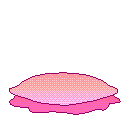Tongue twisters are words, phrases, or sentences which are difficult to pronounce properly and result in fun and humor. Why is that? It is because of a varying combination of similar sounds in them. They can be very challenging as well as motivating. They can be also fun to learn. Evan adults want to repeat tongue twisters to impress the others.
What Can Tongue Twisters Help With?
- Language: The child learns meaning, synonyms, antonyms, or homonyms, correct form of the word and how to use it in context.
- Auditory Discrimination: The child listens and identifies correct or incorrect productions.
- Articulation: The child practices using articulators (lips, tongue, jaw), proper breath support and vocal cords.
- Fluency: The child practices a smooth rate and rhythm of speech by increasing mean length of utterance, and improving self-monitoring skills.
You Can Use Tongue Twisters In The Following Ways:
- Language: Have the child complete sentences, answer “Wh” questions, and identify regular and irregular past tense verbs, adjectives, and adverbs. You can also use the target words to teach or reinforce rhyming, synonyms, antonyms, and homonyms.
- Auditory Discrimination: The parent purposefully misarticulates a word(s) while saying the tongue twister. The child listens and identifies the incorrect productions.
- Articulation: Have the child practice using articulators and proper breathing to the microphone or in front of a mirror.
- Fluency: Give a model so the child can practice a smooth rate and rhythm of speech.
Examples Of Tongue Twisters For Kids
You can start with the one with the visual cues:
Then go to the one which rhyme:
Fuzzy Wuzzy was a bear,
Fuzzy Wuzzy had no hair,
Fuzzy Wuzzy wasn't very fuzzy,
was he?
Fuzzy Wuzzy had no hair,
Fuzzy Wuzzy wasn't very fuzzy,
was he?
Why do you cry, Willy?
Why do you cry?
Why, Willy?
Why, Willy?
Why, Willy? Why?
Whether the weather be fineWhy do you cry?
Why, Willy?
Why, Willy?
Why, Willy? Why?
Or whether the weather be not.
Whether the weather be cold
Or whether the weather be hot.
We'll weather the weather
Whether we like it or not.
She sells seashells by the sea shore.
The shells she sells are surely seashells.
So, if she sells shells on the seashore,
I'm sure she sells seashore shells.
Peter Piper picked a peck of pickled peppers.
A peck of pickled peppers Peter Piper picked.
If Peter Piper picked a peck of pickled peppers,
How many pickled peppers did Peter Piper pick?
Tongue Twisters in Speech Therapy
Since I’m a speech-language pathologist (SLP) I use the tongue twisters with my clients. I apply them exactly the way as presented above.
Here are the steps in the therapy:
- I begin by saying the tongue twister completely so as to emphasize the targeted sound. Next, the child identifies the target sound. If I see that it is too difficult I help the child to do that. At last the child says the words, producing the target sound correctly.
- Then the child says the tongue twister by either repeating after me, one line or phrase at a time, or by choral reading (reading the same thing at the same time).
- When accuracy improves, I encourage the child to read a little faster. Each repetition of a complete tongue twister is a little faster than the one before. The child tries to keep the words from becoming “twisted.”







.jpg)




No comments:
Post a Comment